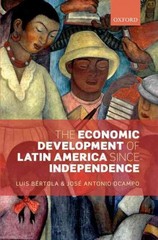1. The table on the right contains employment data for males and females between May 2020 and April 2021. The data is seasonally adjusted and comes from the Labour Force Survey for Canada as a WhOIE- Employment a) What is the significance ofthe data being "seasonally Males Females May720 8,800.50 7,643.40 adjusted"? How can we compare the data because of this Jun20 9,277.00 8,108.70 trait? Jul20 9,441.20 8,361.40 b) Create a time series graph using this data. Aug20 9,519.40 8,496.90 c) Explain what the data shows in terms of trend for both 59020 3688-70 31699-90 Oct20 9342.90 8340.10 Nov20 9,775.00 8,762.40 d) Does the relative size of employment change for one [39.3.20 935110 833254} gendervs. the other? 130721 9,674.00 8,598.00 Feb21 9,797.60 8,733.60 _ Mar21 9,951.60 8,882.70 comparing male and female employment? Apr21 936920 3,7581\" males and females over the year. e) What other aspects of employment might be useful when 2. At some future point in time the Census of Canada, being currently conducted, will release an unemployment rate for Canada in the month of May 2021. a) If this number is not the same as the unemployment rate from the Labour Force Survey will that be an issue for one or both data sources? b} What is the value of the Census of Canada compared to the Labour Force Survey? c) Why does the Labour Force Survey not provide absolutely accurate information? d) Why is this not a serious problem? e) Does the Census of Canada provide absolutely accurate information? Why or why not? 3. The table below contains the unemployment rate (UR) for selected provinces and Canada in April 2021. (CA = Canada, NL = Newfoundland and Labrador, PE = Prince Edward Island, NS = Nova Scotia, and NB = New Brunswick). Time period is April 2021, and the data is seasonally adjusted. 8) CA NL PE NS NB UR 8.1 13.9 8.2 8.1 8.5 Graph the data in the table. What type of graph did you use to display this information? What is the value of this information? What other data might you want to see before assessing the labour market performance of the provinces. Does the fact that the data is seasonally adjusted matter? Why or why not? 4. Employment Insurance (Unemployment Insurance in the United States) provides a temporary income support to people who have lost theirjob through no fault oftheir own (they did not quit theirjob, or they were not fired from theirjob). The program provides support by giving a percentage of their weekly earnings up to a maximum while they are searching for a new job. This support will last for a maximum period. Benefits will lower the cost of unemployment to the job seeker and extend the duration of unemployment. What is the cost of longer unemployment? Benefits will lower the cost of unemployment to the job seeker and extend the duration of unemployment. What is the benefit of longer unemployment? In the United States, unemployment insurance is not portable to other states, while it is portable to other provinces in Canada. What is the benefit of allowingjob seekers to go to other labour markets to seek work with El? The maximum duration of El or UI benefits is dependent upon the unemployment rate in the job seekers labour market. Why does this make sense? If El benefits allow the recipient to travel to seek employment how will a relatively high unemployment affect EI recipients in that area? 5. The table below contains seasonally adjusted labour force survey data for Canada in March and April of 2021. Canada a) Add two additional columns with the Labour force characteristics March '21 April '21 Labour force 20,351.10 20,267.50 numeric and percentage change in each of Employment 18,834.30 18,627.20 Full-time employment 15,395.90 15,266.50 the variables. (The unemployment and Part-time employment 3,438.50 3,360.70 participation rate only have a percentage Unemployment 1,516.70 1,640.30 Unemployment rate (%) 7.5% 8.1% point change not a percentage change, i.e. Participation rate (%) 65.2% 64.9% just subtract them.) b) The unemployment rate rose by 0.6 percentage points between March and April. What happened to the labour force and the participation rate? Why does this make the unemployment rate increase worse or better? c) What was the relative change in full-time and part-time employment? Why does this make the unemployment rate increase more or less problematic? d) Why is the unemployment rate used if the level of unemployment is available in the table? e) Other than just an increase in the level and rate of unemployment, is there anything in this table which would indicate that job seekers are pessimistic










